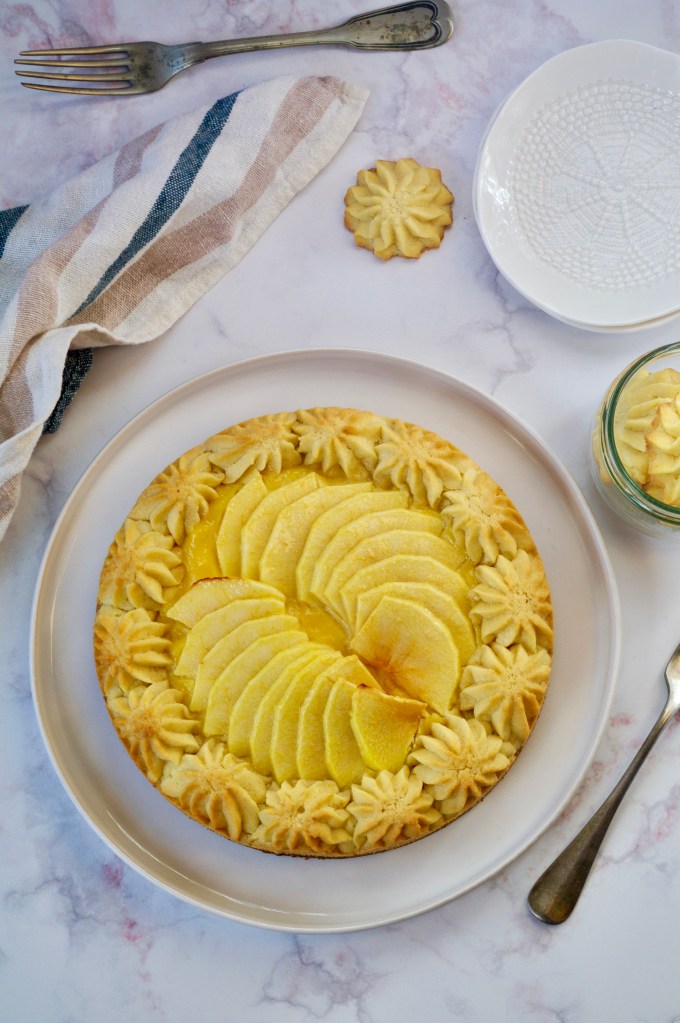
Finalmente arriva la torta del mese di febbraio.
La frutta di stagione che ho scelto sono le mele. Racchiuse in una doppia frolla: una classica sul fondo ed una frolla montata per il bordo. Una deliziosa crema pasticcera da forno completa il dolce, donando corpo e cremosità.
Mi sono ispirata ad una ricetta di Iginio Massari, utilizzando però la mia ricetta di crema pasticcera e cambiando il ripieno di mele.
Non solo piacerà a tutti nel gusto, ma stupirà senza dubbio anche alla vista.
Le torte dei mesi precedenti sono dedicate ad altra frutta: prugne, pere, castagne, agrumi, kiwi (cliccando sul singolo frutto, c’è il link diretto alla relativa ricetta).
Altre due ricette di crostate di mele le trovate qui e qui: non saprei proprio dire quale sia la migliore.
On air: Magnum - Miscuglio Magico
INGREDIENTI (per 1 crostata da 24cm di diametro)
Per la frolla tipo Milano:
- 250g farina 00 debole
- 125g burro morbido
- 100g zucchero a velo
- 25g miele d’acacia
- 50g uova intere (1 uovo piccolo)
- 2g lievito per dolci
- 2g sale
- semini di 1/3 bacca di vaniglia
- scorza grattata di 1/3 limone, non trattato
Per la frolla montata per giro crostata:
- 250g farina 00 debole
- 175g burro morbido
- 100g zucchero a velo
- 70g uova intere (1 uovo grande)
- semini di 1/2 bacca di vaniglia
- scorza grattata di 1/2 limone, non trattato
Per la crema pasticcera da forno:
- 250g latte fresco
- 100g uova intere (2 uova piccole)
- 100g zucchero semolato
- 15g amido di mais (maizena)
- 15g fecola di patate
- semini di 1/2 bacca di vaniglia
- scorza di 1/2 limone, non trattato
Per il ripieno:
- 2 mele (Golden Delicious, Pink Lady o Granny Smith)
- 2 cucchiai di succo di limone
Per la finitura:
- gelatina spray all’albicocca (o confettura liscia di albicocca)
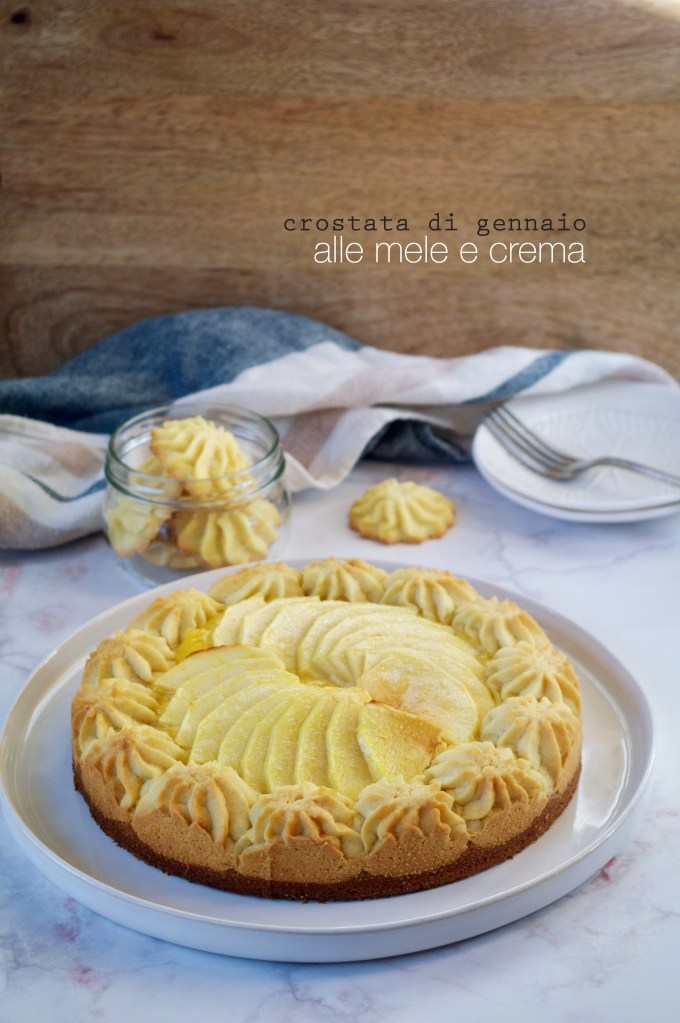
Per la frolla tipo Milano: nella ciotola della planetaria, munita di di foglia (o in una ciotola normale se lo fate a mano), inserire burro morbido, zucchero, miele, vaniglia e limone. Amalgamare tutti gli ingredienti senza montare. Aggiungere uova e sale e mescolare ancora. Unire farina e lievito, precedentemente setacciati, e mescolare giusto il tempo di ottenere un impasto omogeneo, con la farina ben amalgamata.
Rivestire l’impasto con pellicola e spostare in frigorifero per almeno 2h (è possibile anche farla il giorno prima oppure congelarla).
Per la frolla montata per giro crostata: nella ciotola della planetaria (o in una ciotola normale, utilizzando le fruste elettriche) inserire il burro morbido e, con la foglia, montare a velocità sostenuta per 2-3′. Aggiungere zucchero a velo, vaniglia, limone, sale, continuando a montare per almeno 5′. Ottenuto un composto gonfio e chiaro, aggiungere l’uovo, in 3 volte, facendo ben assorbire una dose prima di aggiungere la successiva (nelle foto si vede la montata prima e dopo l’inserimento delle uova: il composto deve essere corposo e non stracciato). In ultimo, a velocità minima, unire la farina e mescolare giusto il tempo di ottenere un composto omogeneo.
Inserire l’impasto in una sacca da pasticcere munita di bocchetta a stella (diametro 1 cm).
Per la creazione del guscio di frolla: stendere con un matterello la frolla Milano ad uno spessore di 7mm, su un foglio di carta forno infarinato. Con l’anello microforato per crostate incidere la frolla per crearne il fondo, quindi spostare il foglio di carta forno su una teglia, mantenendo l’anello come bordo. Forare il disco di frolla con i rebbi di una forchetta, in più punti.
Dressare lungo tutto il bordo del disco dei ciuffi di frolla montata, di modo che creino una cornice uniforme senza spazi.
Spostare la teglia in frigorifero mentre si prepara la crema pasticcera.
Per la crema pasticcera da forno: in un pentolino mettere latte, vaniglia e scorza di limone intera. Far scaldare su fiamma dolce fino a bollore.
Nel frattempo, in una ciotola, lavorare con una frustino uova, zucchero, fecola e amido. Quando il latte bolle, eliminare la scorza del limone quindi versare 1/3 di liquido sulle uova. Mescolare con la frusta quindi versare il composto sopra ai 2/3 di latte rimanenti e riportare sul fuoco. Cuocere a fiamma dolcissima per qualche minuto, mescolando di continuo con un cucchiaio. Quando la crema velerà il cucchiaio spegnere, versarla subito in una ciotola fredda, coprirla con pellicola a contatto e farla raffreddare per 30′.
Per il ripieno: sbucciare le mele, tagliarle a metà ed eliminare il torsolo. Tagliare ogni metà a fettine sottili e spruzzarle col succo di limone.
Per la crostata finita: riprendere il guscio di frolla Milano e frolla montata dal frigorifero. Versarci nel mezzo la crema pasticcera, raffreddata, quindi disporvi sopra le fettine di mela, creando dei decori a proprio piacimento.
Infornare in forno statico PRERISCALDATO a 180°C per 30′ circa: la frolla montata al tatto sarà dura, pur restando pallida di colore.
Sfornare e spruzzare subito la gelatina sulle mele (oppure spennellarle con confettura di albicocche liscia, senza pezzi).
Far raffreddare sulla teglia per 30′, quindi sfilare l’anello microforato e lasciar raffreddare altri 30′. Far scivolare un vassoietto sotto alla carta forno della crostata per spostare il vostro dolce dalla teglia. Far raffreddare completamente prima di spostare sul piatto da portata, affettare e servire.
Se non consumata in giornata, conservare al fresco e consumare entro 2 giorni.
ENJOY!

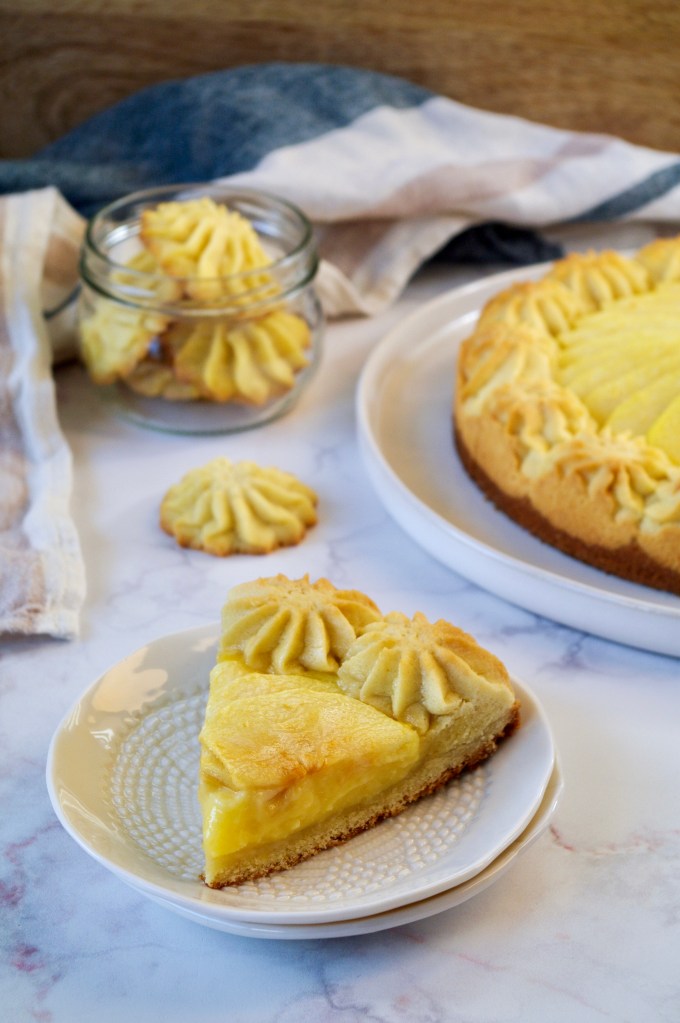
JANUARY APPLE AND CREAM TART
INGREDIENTS (for a 24cm tart)
For the shortcrust pastry:
- 250g pastry flour
- 125g butter, room temperature
- 100g powdered sugar
- 25g acacia honey
- 50g whole eggs (1 small egg)
- 2g baking powder
- 2g salt
- 1/3 vanilla bean seeds
- 1/3 lemon zest, grated
For the whipped shortcrust pastry:
- 250g pastry flour
- 175g butter, room temperature
- 100g powdered sugar
- 70g whole eggs (1 large egg)
- 1/2 vanilla bean seeds
- 1/2 lemon zest, grated
For the pastry cream (custard):
- 250g fresh milk
- 100g whole eggs (2 small eggs)
- 100g caster sugar
- 15g cornstarch
- 15g potato starch
- 1/2 vanilla bean seeds
- 1/2 lemon zest
For the filling:
- 2 apples (Golden Delicious, Pink Lady or Granny Smith)
- 2 tablespoons lemon juice
For the finishing:
- apricot spray gelatine (or smooth apricot jam)
For the shortcrust pastry: in the bowl of a stand mixer, with the paddle attachment (or in a normal bowl if you do it by hand), insert soft butter, sugar, honey, vanilla and lemon. Mix all the ingredients without whipping. Add eggs and salt and mix. Combine flour and baking powder (previously sieved), and mix just the time to obtain a homogeneous mixture.
Cover the dough with plastic wrap and move in the refrigerator for at least 2 hours (you can also make it the day before or freeze it).
For the whipped shortcrust pastry: in the bowl of a stand mixer (or in a normal bowl, using an electric whisk), insert soft butter and, with the paddle attachment, whip at a high speed for 2-3′. Add powdered sugar, vanilla, lemon, salt, continuing to whip for at least 5′. Obtained a swollen and clear compound, add the egg, in 3 times, making a dose well absorbed before adding the next (in the photos you can see the mixture before and after the insertion of the eggs: the mixture must be full-bodied and not torn). Finally, at minimum speed, add the flour and mix just long enough to obtain a homogeneous mixture.
Insert the dough in a pastry bag equipped with a star nozzle (diameter 1 cm).
To create the shortcrust pastry shell: roll out the shortcrust pastry with a rolling pin to a thickness of 7mm, on a sheet of floured parchment paper. With a micro-perforated ring for tarts, cut the pastry to create the bottom, then move the sheet of parchment paper on a baking sheet, keeping the ring as the edge. Pierce the pastry with the prongs of a fork in several places.
Dress along the edge of the disc some tufts of whipped shortcrust pastry, so that they create a uniform frame without spaces.
Move the pan in the refrigerator while preparing the custard.
For the custard: put milk, vanilla and whole lemon zest in a saucepan. Heat over a low flame until boiling.
In the meantime, in a bowl, work with a whisk eggs, sugar, potato starch and cornstarch. When the milk boils, remove the lemon zest then pour 1/3 of the liquid over the eggs. Stir with a whisk then pour the mixture over the 2/3 of the remaining milk and bring back to the heat. Cook over a very gentle flame for a few minutes, stirring constantly with a spoon. When the cream veils the spoon immediately pour it into a cold bowl, cover it with plastic wrap and let it cool for 30′.
For the filling: peel the apples, cut them in half and remove the core. Cut each half into thin slices and sprinkle them with lemon juice.
For the finished tart: take back the shortcrust pastry shell from the refrigerator. Pour the cooled custard into the middle, then arrange the apple slices on top, creating decorations as you like.
Bake in the pre-heated static oven at 180°C for about 30′: the whipped shortcrust pastry will be hard to the touch, while remaining pale in color.
Remove from the oven and immediately sprinkle the gelatin on the apples (or brush them with smooth apricot jam).
Allow to cool on the pan for 30′, then remove the micro-perforated ring and allow to cool for another 30′. Slide a tray under the baking paper of the tart to move your cake from the pan. Allow to cool completely before moving onto the serving dish, slicing and serving.
If not consumed the same day, keep in the fridge and consume within 2 days.
ENJOY!
A presto, Federica
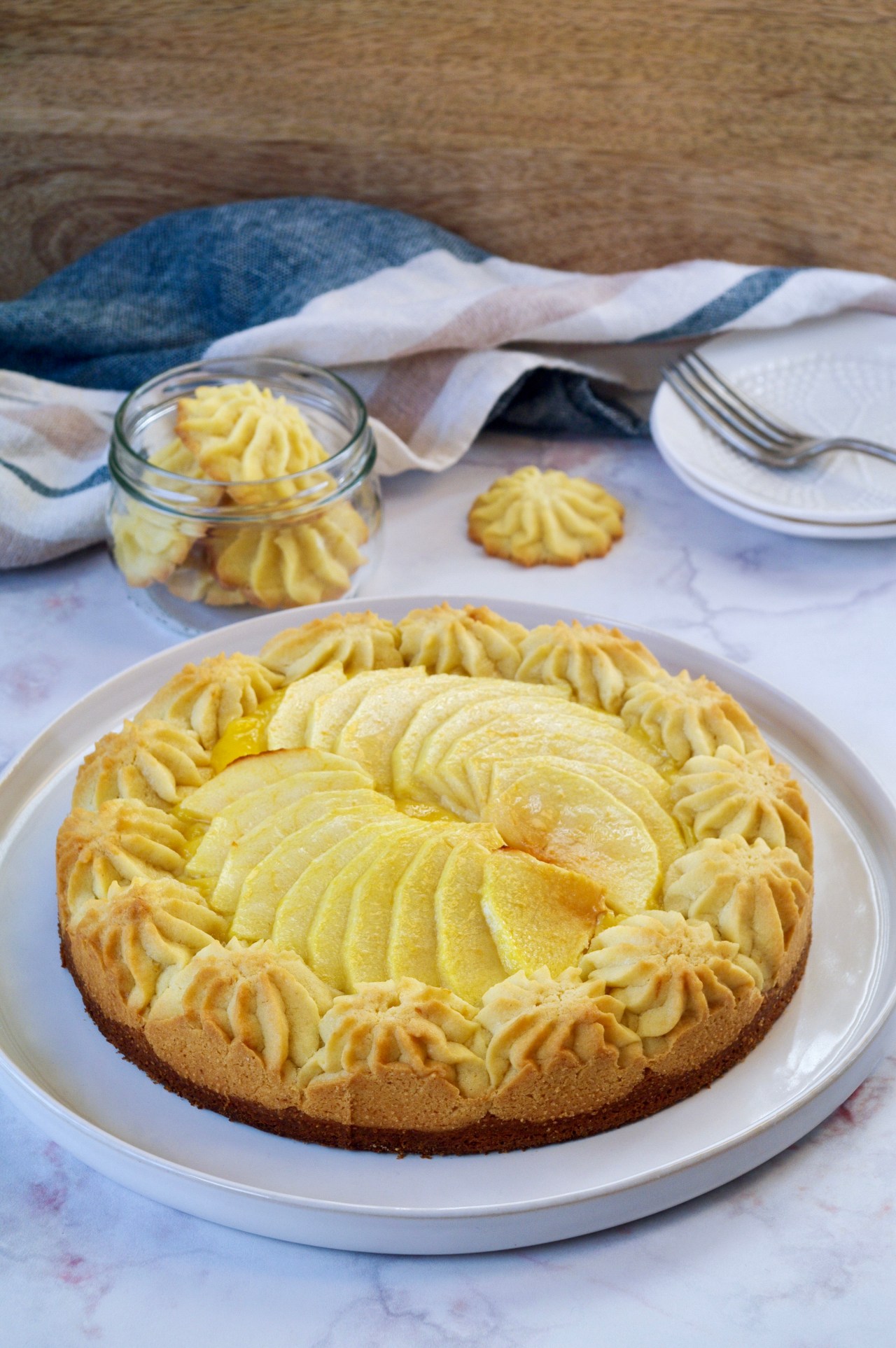


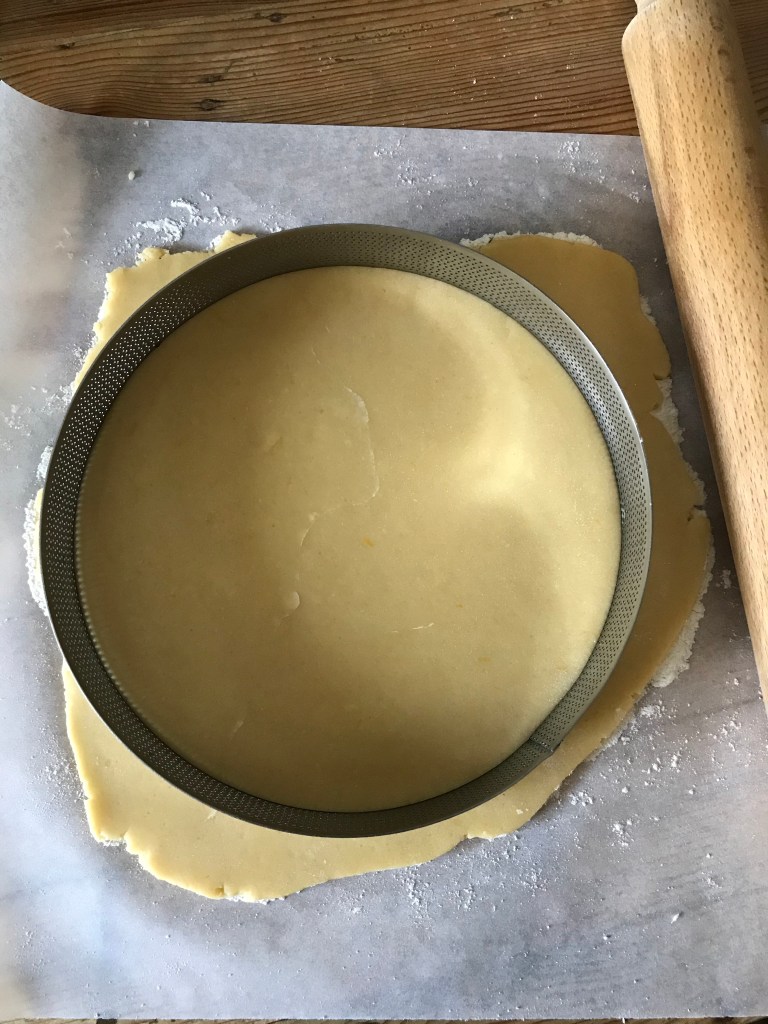

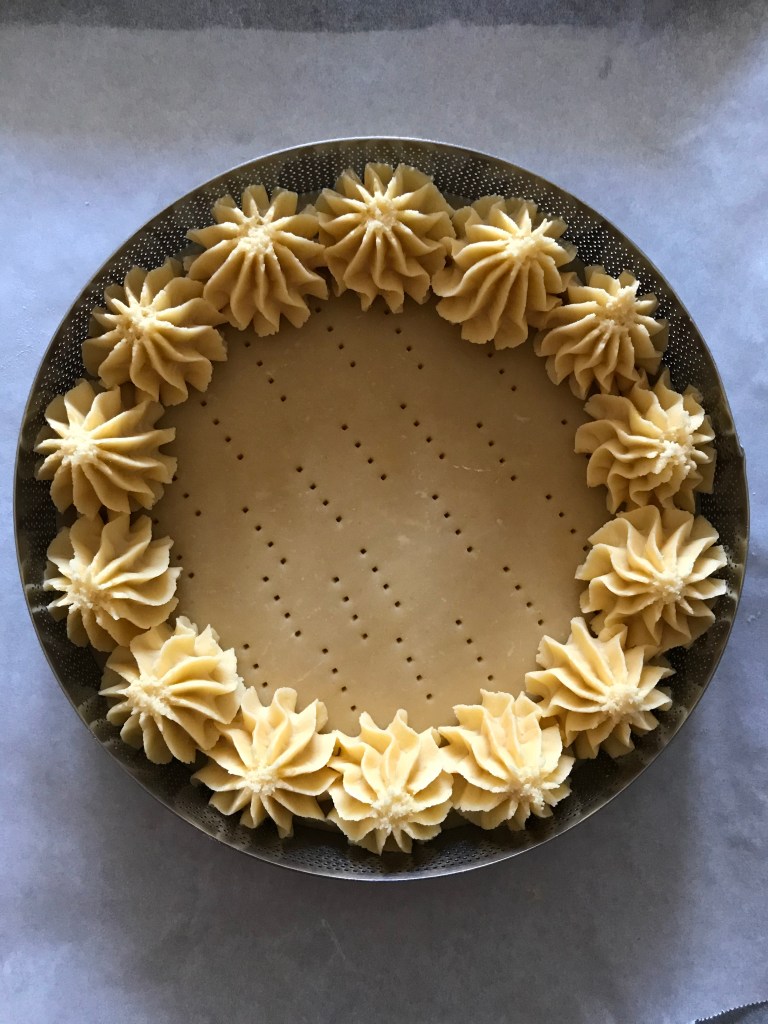
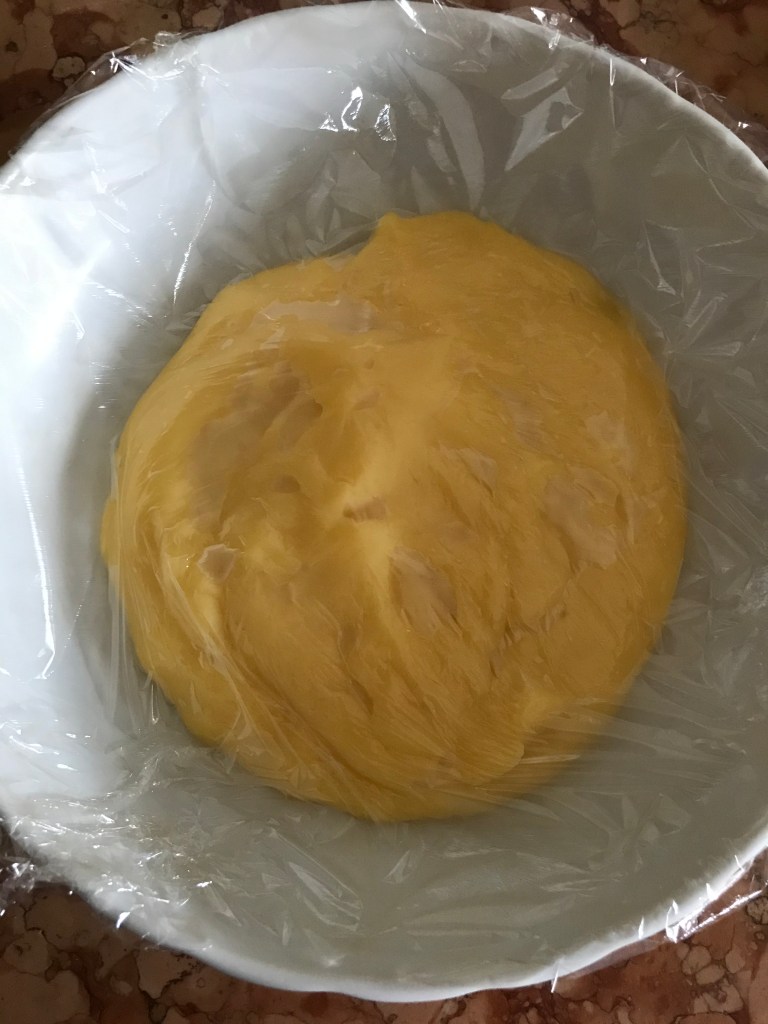
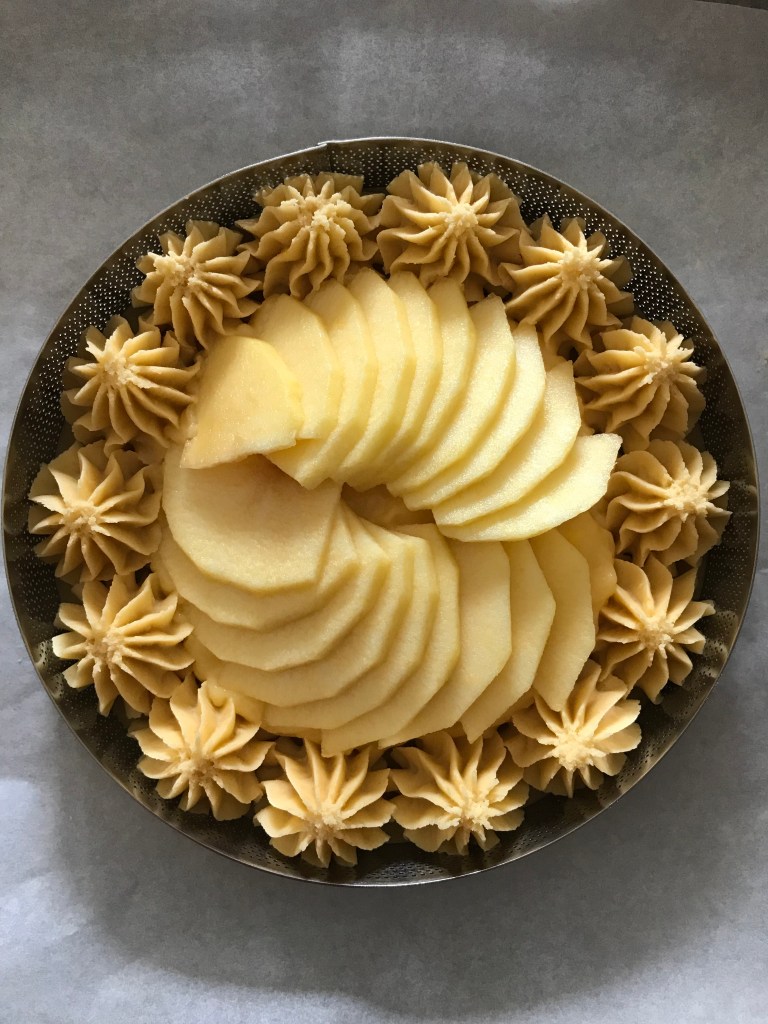
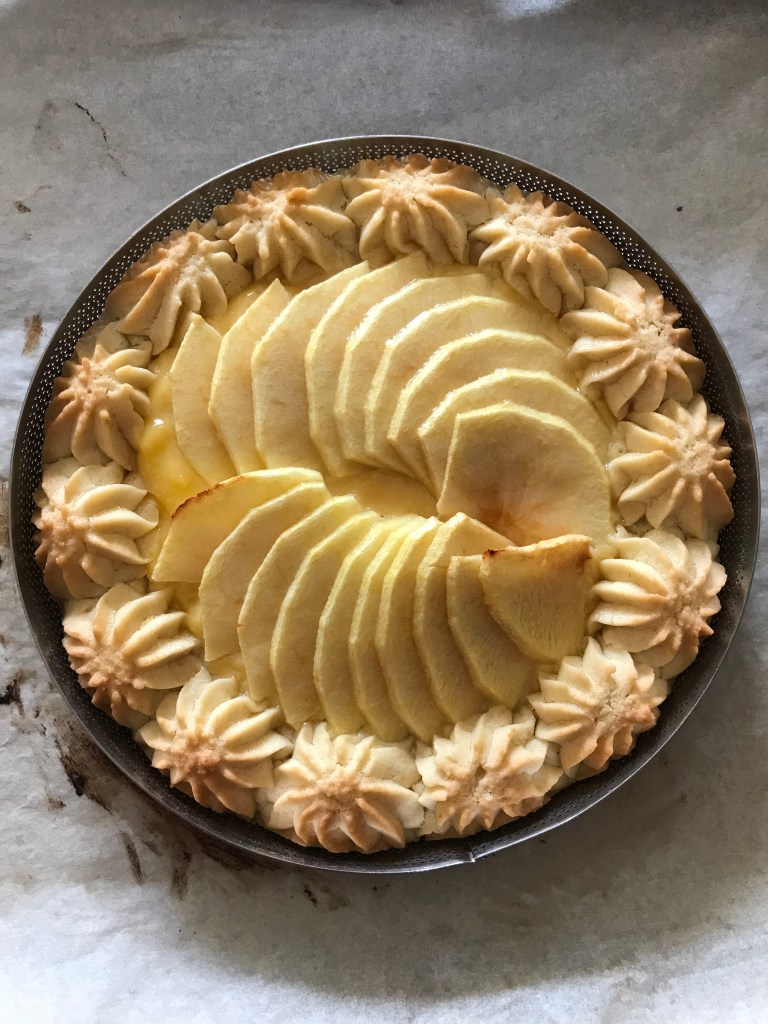
Sembrano dei fiori. Sicuramente è appetitosa
"Mi piace""Mi piace"
🌷 🌷 da provare
"Mi piace""Mi piace"
🔝🔝🔝🍎
"Mi piace""Mi piace"
😛 slurp
"Mi piace""Mi piace"